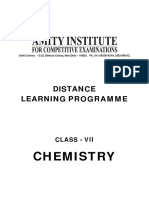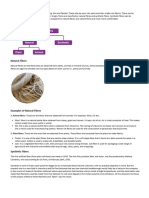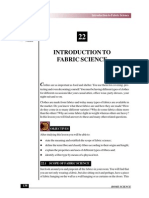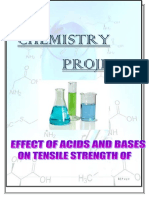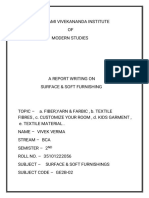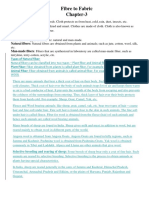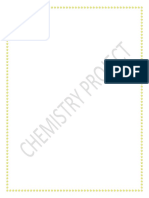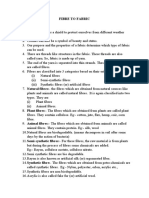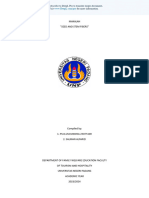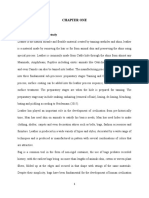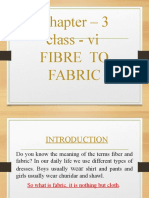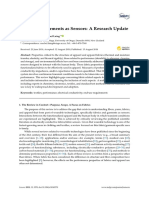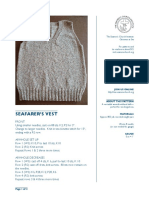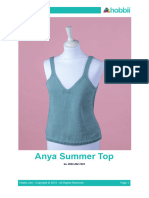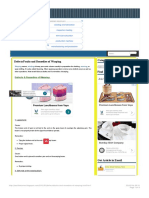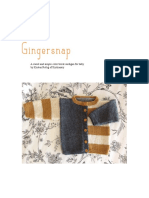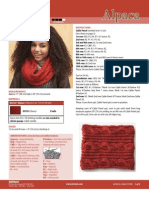Tour Report-Science Centre
Tour Report-Science Centre
Uploaded by
Rajkumar MohiteCopyright:
Available Formats
Tour Report-Science Centre
Tour Report-Science Centre
Uploaded by
Rajkumar MohiteOriginal Description:
Original Title
Copyright
Available Formats
Share this document
Did you find this document useful?
Is this content inappropriate?
Copyright:
Available Formats
Tour Report-Science Centre
Tour Report-Science Centre
Uploaded by
Rajkumar MohiteCopyright:
Available Formats
Roll No. .
Examination No. Shri Shivaji Shikshan Prasarak Mandal, Barshis
Shri Shivaji Mahavidyalaya, Barshi.
DEPARTMENT OF PHYSICS Study Tour Certificate
Date
This is to certify that Shri/Smt. has satisfactorily completed Study Tour as a part of graduate course in PHYSICS.
Prof in Charge
Examiner
Head of the Department
We really did enjoy Science centre and Solapur University over a day & we are looking forward to gaining opportunities to visit again there.
A group picture at Science centre, Solapur
STUDY TOUR REPORT Our institute has recently organized our tour as a part of our learning to Solapur. We visited three places i.e. science centre, Solapur University and Siddheswar temple. It was such a wonderful experience. On 4th march 2014 we started our one day study tour. We got an opportunity to visit science centre. Science centre is situated about 69 km from Barshi. The study tour was placed in total of 2 cruisers each cruiser consist of 15 average students. We started tour by 8 Oclock morning, finally the by 10 Oclock; all the students and faculty reached at science centre.
Solapur science centre:
Solapur science centre is like a science museums and their motto is to develop scientific temper among masses. It has wide range of exhibits and specially catered educational programmers. There are 24 science centers or museums located in different states in India are established by national council of science museums (NCSM). NCSM is an autonomous organization under Indian ministry of culture. Among these 24 science centres one is located at Solapur, Maharashtra state. This Solapur science centre is inaugurated on 14th feb 2010. We are very happy we got an opportunity to visit Solapur science centre. When we entered inside the science centre we saw there were so many instruments and experiments with basic science principle behind them. We really shocked to see such a big collection of experiments, at that time only one question was in our mind and that is from where to start?. Nevertheless, Mr. Gomsae sir was there and he guided us and explained basic ideas behind these science experiments. It is really very difficult to mention all the experiments which I understood there. But I would like to mention some of them which I found very interesting. Floating disc: I pushed a button and I saw disc was floating in air. This experiment is based on principle of Maglev. There is an electromagnet when we pass current thought it. It produces fluctuating magnetic field, which interns induces eddy current in the conductive aluminium disc. This current also sets up another magnetic field around the disc. The repulsive force between the two magnetic fields around the disc, make disc to float.
Reflection of heat radiations: Theoretically we have studied that heat is reflected like light. But we never experimented this concept. There is a simple arrangement as shown in fig. bulb radiate heat radiations which reflected and focused at a point just above the reflecting surface. When we move our hands over a surface then we experience a heat which is focused just above the reflecting surface. It proved that reflection of heat is very similar to the reflection of light. I also found some another experiments interesting such as Lazy coins, Eddy current, Coriolis forces. Different posters and pictures are there these are also very informative. Optical illusions: An optical illusion is a subject of interest of all of us. In science centre there are so many experiments based on optical illusion. They also showed us 3-D film and we enjoyed it lot. Various pictures, infinite well, steady shadow, and so many experiments based on optical illusions we found interesting and made us to think about them. Mr. Gomase sir showed us twinkling stars in planetarium. He also showed us how to locate and identify Dhruva star to get correct information about the directions at night. He also gave information and showed different constellations. Cotton and textile: As we know Solapur is famous for textile industries hence there is a separate section to give information about history of textile industry, equipments and fabrics. I have collected lots of information about cotton and textile industries. I would like to mention some interesting information about textile industries as bellow; Ancient India and textile: Cotton has been spun, woven, and dyed since prehistoric times. It clothed the people of ancient India, Egypt, and China. Hundreds of years before the Christian era cotton textiles were woven in India with matchless skill, and their use spread to the Mediterranean countries. In the 1st cent. Arab traders brought fine Muslin and Calico to Italy and Spain. The Moors introduced the cultivation of cotton into Spain in the 9th cent. Fustians and dimities were woven there and in the 14th cent. in Venice and Milan, at first with a linen warp. Little cotton cloth was imported to England before the 15th cent., although small amounts were obtained chiefly for candlewicks. By the 17th cent. the East India Company was bringing rare fabrics from India. Native Americans skillfully spun and wove cotton into fine garments and dyed tapestries. Cotton fabrics
found in Peruvian tombs are said to belong to a pre-Inca culture. In color and texture the ancient Peruvian and Mexican textiles resemble those found in Egyptian tombs. Types of fabrics: Fabrics are manufactured from various raw-materials which are available from nature or artificially generated or mix of both. Fabrics can be classified based on the origin of fibers and its processes or its end usage. 1. Natural fabrics: Natural fabrics are those which are created from the fibers of animals coats, the cocoons of silkworms, and plants seeds, leaves and stems. 1.1 Cotton Fabric The fabric which is believed to be most soothing and safe is called as cotton fabric. Immense use of cotton fabric for infants dresses. Cotton fabric has a distinctive feature that it adjusts easily with climatic requirements that is why it is called all-season fabric. In summer season cotton fabric keeps the body cool and absorbs the sweat easily whereas they give a warm feel if worn in winter season. 1.2 Silk Fabric Silk counts to the strongest natural fabric in the world. It is famous for its softness, luster, beauty and luxurious look. It Keep the body cool in summer and warm in winter, silk was discovered during 2640 B.C. in china. Indian silk textile is popular worldwide. 1.3 Wool Fabric Soft, strong and very durable wool fabric provide warmth and attractive appearance. It is the fabric which keeps the wearer dry while sweating and cool when it is hot. Wool fabric is being used for clothing for over 12.000 years does not only come from sheep only, whereas widely used kashmiri sweaters are made from goats. Wool fabric is equipped with different characteristics like warm, resists to wrinkle, wear and tear, it is light weight and durable which also absorbs moisture. 1.4 Leather Fabric Comfortable in both hot and cold condition, leather fabric is not affected by surrounding temperature. Adding a classic luxury, pleasant to touch and comfortable, leather fabric is soft, elastic and firm.
1.5 Jute Fabric Jute fabric is a strong and durable fabric. It is ideally being used as bags or sacks for packing since aging. Bangladesh counts to the largest cultivator of jute fabric with India as the second largest jute goods manufacturer. 2. Synthetic or man-made fabrics Synthetic fibers are made from fibers which are either completely made from inorganic materials or organic materials combined with chemicals. Synthetic fabrics have numerous properties with the purpose for which it is produced and finished. Some are lightweight with ultra sheer while others are moisture wicking and fast drying. 2.1 Acrylic Fabric Acrylic fabric is a kind of the synthetic fibre that is artificially manufactured. Acrylic fabric is an artificial textile fiber made from petroleum products. Acrylic fabrics are available mainly in two forms that are 'Courtelle' and 'Orlon'. 2.2 Nylon Fabric The term nylon is derived from the New York and London. Nylon fabric is a polyamide made from petroleum. It is lightweight, durable and strong and also dries very quickly. Nylon fabric is widely used in industrial applications, home furnishings and also in geo textiles. It was first commercially produced in 1939. 2.3 Polyester Fabric Polyester is a type of fabric that is not found naturally. The polyester fabric is man made. The polyester fabric is widely used in various applications and is very much in demand in markets. The polyester fabric is very strong and soft as well. There are various uses of polyester fabric like it is used in casement curtains, draperies, floor coverings, throw rugs, bedding, and as a cushioning or insulating material. 2.4 Rayon Fabric Rayon fabric is basically that synthetic textile fiber which is obtained by forcing a cellulose solution through fine spinnerets. In other words, rayon fabric is a final result of solidifying filaments. Rayon is a unique type of fabric that cannot be termed either a synthetic fabric or natural one. 2.5 Polypropylene Fabric
Polypropylene, also known as polypropene, is a thermoplastic polymer used in a wide variety of applications including packaging and labeling, textiles (e.g., ropes, thermal underwear and carpets), stationery, plastic parts and reusable containers of various types, laboratory equipment, loudspeakers, automotive components, and polymer banknotes. An addition polymer made from the monomer propylene, it is rugged and unusually resistant to many chemical solvents, bases and acids. Fabric making: 1. Weaving is a textile production method which involves interlacing a set of longer threads (called the warp) with a set of crossing threads (called the weft). This is done on a frame or machine known as a loom, of which there are a number of types. Some weaving is still done by hand, but the vast majority is mechanised. 2. Ginning: Ginning is a process of that involves separating the cotton fibres from the cotton seeds. Perfect ginning operation can only be performed if the separation of fibres from seed is effected without any injury to either seeds or to the fibre. A cotton gin is a machine that easily separates the cotton fibres from the seeds. 3. Knitting and crocheting involve interlacing loops of yarn, which are formed either on a knitting needle or on a crochet hook, together in a line. The two processes are different in that knitting has several active loops at one time, on the knitting needle waiting to interlock with another loop, while crocheting never has more than one active loop on the needle. 4. Carding is a mechanical process that disentangles, cleans and intermixes fibers to produce a continuous web or sliver suitable for subsequent processing. This is achieved by passing the fibers between differentially moving surfaces covered with card clothing. We leaved science centre at 2.30pm after lunch and visited Solapur University. There we visited different departments and main building of university. In school of physical sciences we see various labs and get information about various techniques. There we see different thin film deposition techniques and understood their working. After completing this study tour we visited Siddheshwar temple to offer a pray. After praying we leaved Solapur at 5pm and reached in Barshi at 6.30pm.
You might also like
- Contemporary Knitting For Textile Artists-Lee, Ruth-2007Document136 pagesContemporary Knitting For Textile Artists-Lee, Ruth-2007MariaNo ratings yet
- Study The Effect of Acids and Bases On The Tensile Strength of A FibreDocument15 pagesStudy The Effect of Acids and Bases On The Tensile Strength of A FibreHiaderKhokhawala75% (69)
- Cognex Deep Learning: Textile Inspection Industry OverviewDocument7 pagesCognex Deep Learning: Textile Inspection Industry OverviewPrabhuti ChauhanNo ratings yet
- Finger Knitting PDFDocument2 pagesFinger Knitting PDFLana KovacNo ratings yet
- 7th Chemistry DLP Study Package FinalDocument101 pages7th Chemistry DLP Study Package FinalAdityaNo ratings yet
- Fibres To FabricDocument23 pagesFibres To FabricPallavi Luthra Kapoor100% (1)
- Short Answer TextileDocument2 pagesShort Answer TextileParanthaman RamamoorthyNo ratings yet
- 966-2 Fabric Types To Drapes PDFDocument251 pages966-2 Fabric Types To Drapes PDFJonyNo ratings yet
- Cloth: YarnDocument3 pagesCloth: Yarngunjan pratapNo ratings yet
- FibresDocument2 pagesFibressanjaydhanwariaNo ratings yet
- TDT 151 Lecture Notes 2022Document44 pagesTDT 151 Lecture Notes 2022Ollè WorldwideNo ratings yet
- Study of Sericulture in IndiaDocument194 pagesStudy of Sericulture in IndiaWasiq Khan100% (2)
- Sls Dav Public School Mausam Vihar, Delhi - 110051: Class - Vii, Science & Technology ChapterDocument39 pagesSls Dav Public School Mausam Vihar, Delhi - 110051: Class - Vii, Science & Technology ChapterKrishna GoyalNo ratings yet
- 321 e Lesson 22Document13 pages321 e Lesson 22mahmudtexNo ratings yet
- Types of FibersDocument7 pagesTypes of FibersAbubakar JavedNo ratings yet
- Hotextile Lecture 2Document12 pagesHotextile Lecture 2fatima hussainNo ratings yet
- Chemistry Project: Effect of Acid and Base On The Tensile Strenght of FibresDocument31 pagesChemistry Project: Effect of Acid and Base On The Tensile Strenght of FibresNirupam Gupta100% (4)
- 7 Fiber To FabricDocument14 pages7 Fiber To FabricRuchika Bhasin AbrolNo ratings yet
- SivanesanDocument42 pagesSivanesanKp PrakashNo ratings yet
- UntitledDocument11 pagesUntitledAninytegsyNo ratings yet
- Clothing and TextileDocument5 pagesClothing and Textilejoseffixx979No ratings yet
- Уроки Для 2ДЗ (2 Курс Дизайнери) 2Document31 pagesУроки Для 2ДЗ (2 Курс Дизайнери) 2Katia LeliakhNo ratings yet
- Class 9 FD Unit TestDocument13 pagesClass 9 FD Unit TestshrinksaaaNo ratings yet
- Cta Properties PDFDocument20 pagesCta Properties PDFAlen Jose ThomasNo ratings yet
- Production of High Quality Silks Having Different Fluorescent Colors by Transgenic SilkwormsDocument2 pagesProduction of High Quality Silks Having Different Fluorescent Colors by Transgenic SilkwormsRo Be LNo ratings yet
- Fibre To Fabric Class 7 NotesDocument18 pagesFibre To Fabric Class 7 Notesshrutikashyap0003No ratings yet
- Fibre To FabricDocument13 pagesFibre To FabricRajeevSangamNo ratings yet
- Scheme of The EvaluationDocument6 pagesScheme of The EvaluationSabihanaz InamdarNo ratings yet
- 79 1 ET V1 S1 - Unit - 1 PDFDocument14 pages79 1 ET V1 S1 - Unit - 1 PDFvandana upadhyayNo ratings yet
- Types of Clothes 12082024Document4 pagesTypes of Clothes 12082024andy cairnsNo ratings yet
- To Find The Effect of Acids and Alkalies On Tensile Strength of Cotton, Silk and Wool Fibers.Document18 pagesTo Find The Effect of Acids and Alkalies On Tensile Strength of Cotton, Silk and Wool Fibers.Yogesh Singh100% (1)
- Spider Silk 2Document8 pagesSpider Silk 212D1.04 .Nguyễn Doãn Ngân HàNo ratings yet
- HortonDocument9 pagesHortonplavaljubicica7No ratings yet
- Textile Industry - 01 LectureDocument40 pagesTextile Industry - 01 Lectureisabelism100% (1)
- Fibre To Fabric Class 6 Notes.Document3 pagesFibre To Fabric Class 6 Notes.amritha mishraNo ratings yet
- MAKALAH TEKSTIL 1 Softfile BingDocument10 pagesMAKALAH TEKSTIL 1 Softfile BingHuswatun HasanaNo ratings yet
- Topic 8-Selecting Fabrics For SewingDocument7 pagesTopic 8-Selecting Fabrics For SewingMARY GRACE CABILINo ratings yet
- RayeesDocument52 pagesRayeesAnshid ElamaramNo ratings yet
- Origin of FibreDocument10 pagesOrigin of FibreShyam ParthasarathyNo ratings yet
- Science - L-4 Clothes-Our Protectors (IV)Document8 pagesScience - L-4 Clothes-Our Protectors (IV)deepika yadavNo ratings yet
- Tayos HND ProjectDocument33 pagesTayos HND ProjectBadmus YussufNo ratings yet
- Synthetic MaterialsDocument11 pagesSynthetic Materialsrock0% (1)
- Science Class VII Chapter 03 Study MaterialDocument14 pagesScience Class VII Chapter 03 Study Materialpremanandaroul2No ratings yet
- Synthetic Fibres and PlasticsDocument23 pagesSynthetic Fibres and PlasticsAB6752 PranavsinghNo ratings yet
- CBSE Class 8 Science Chapter 3 Synthetic Fibres and Plastics Revision NotesDocument20 pagesCBSE Class 8 Science Chapter 3 Synthetic Fibres and Plastics Revision NotesPrabhat KumarNo ratings yet
- Rope PDFDocument19 pagesRope PDFBenjamin van DierenNo ratings yet
- What Is Fibre?: F & O - Viii - Ss - Chem Synthetic Fibres and PlasticsDocument10 pagesWhat Is Fibre?: F & O - Viii - Ss - Chem Synthetic Fibres and PlasticsraushanNo ratings yet
- Chapter - 3 Class - VI Fibre To FabricDocument24 pagesChapter - 3 Class - VI Fibre To Fabricamit lakraNo ratings yet
- Leather Crafting (Artesania Del Cuero)Document57 pagesLeather Crafting (Artesania Del Cuero)gordonsanwey100% (2)
- Studies On The Production of Football Leather From Cow HideDocument40 pagesStudies On The Production of Football Leather From Cow Hiderubelbclet100% (1)
- Class 7-Science-Chapter 3 - Fibre To FabricDocument3 pagesClass 7-Science-Chapter 3 - Fibre To FabricGauri KadNo ratings yet
- Mba Project Report FinanceDocument78 pagesMba Project Report FinancegetmyshijoNo ratings yet
- ScriptDocument5 pagesScriptAubrey Kincely MacatiagNo ratings yet
- Bulu WoolDocument9 pagesBulu WoolcahyatiwulNo ratings yet
- Exp SC 4 - Chapter 04Document8 pagesExp SC 4 - Chapter 04megamind publicationNo ratings yet
- Knit, Hook, and Spin: A Kid's Activity Guide to Fiber Arts and CraftsFrom EverandKnit, Hook, and Spin: A Kid's Activity Guide to Fiber Arts and CraftsRating: 5 out of 5 stars5/5 (1)
- The Art of Leather Pyrography for Beginners: A Manual on Drawing and Lettering on Leather with Step-by-Step Techniques with Essential Tips and ProjectsFrom EverandThe Art of Leather Pyrography for Beginners: A Manual on Drawing and Lettering on Leather with Step-by-Step Techniques with Essential Tips and ProjectsNo ratings yet
- Hides and Skins and the Manufacture of Leather - A Layman's View of the IndustryFrom EverandHides and Skins and the Manufacture of Leather - A Layman's View of the IndustryNo ratings yet
- Layout PDFDocument18 pagesLayout PDFClaudia AcostaNo ratings yet
- Calculate Fabric Consumption For GarmentsDocument2 pagesCalculate Fabric Consumption For GarmentsRahul ChoudhuryNo ratings yet
- DT Pattern MurrayDocument0 pagesDT Pattern MurraysweetangelcgnNo ratings yet
- Sensors: Fabrics and Garments As Sensors: A Research UpdateDocument35 pagesSensors: Fabrics and Garments As Sensors: A Research Updatelove guruNo ratings yet
- Cute Bulldog Amigurumi Free Crochet Pattern: MaterialsDocument8 pagesCute Bulldog Amigurumi Free Crochet Pattern: Materialspearl ikebuakuNo ratings yet
- Anleitung-Freitagsfarbentuch EngDocument5 pagesAnleitung-Freitagsfarbentuch Engольга яременкоNo ratings yet
- My Cup of Tea Socks: by RobinlynnDocument4 pagesMy Cup of Tea Socks: by RobinlynnadinaNo ratings yet
- Class 9 FD Unit TestDocument13 pagesClass 9 FD Unit TestshrinksaaaNo ratings yet
- V Neck Vest-RevDocument3 pagesV Neck Vest-RevSusan JackmanNo ratings yet
- Knitted Nativity Scene: MaterialsDocument7 pagesKnitted Nativity Scene: MaterialsSilvia Graciela HerrmannNo ratings yet
- Defects Classification List (DCL)Document16 pagesDefects Classification List (DCL)Sharif OmarNo ratings yet
- Anya Sommertop UsDocument5 pagesAnya Sommertop Usshienny.seliantoNo ratings yet
- Ecoverde BrochureDocument23 pagesEcoverde BrochureStacie AnhNo ratings yet
- Expressive Arts For STD5Document2 pagesExpressive Arts For STD5byakayadaniel8340% (1)
- Mandala Bolster US Terms Photo TutorialDocument7 pagesMandala Bolster US Terms Photo TutorialNuria Tamayo Martínez100% (1)
- Blouse Book bk30Document16 pagesBlouse Book bk30Liangliang MaNo ratings yet
- Innovations in Circular KnittingDocument30 pagesInnovations in Circular Knittingankita_256No ratings yet
- Defects - Faults and Remedies of Warping - Textile LearnerDocument4 pagesDefects - Faults and Remedies of Warping - Textile LearnerGOWTHAM CHANDRUNo ratings yet
- Gingersnap: A Sweet and Simple Color Block Cardigan For Baby by Kristen Rettig of KnitionaryDocument4 pagesGingersnap: A Sweet and Simple Color Block Cardigan For Baby by Kristen Rettig of KnitionaryIzabel VegaNo ratings yet
- Bernat Alpacaweb2 KN Cowl - en USDocument2 pagesBernat Alpacaweb2 KN Cowl - en USEva JanorNo ratings yet
- Knitted Lace BLAD PDFDocument8 pagesKnitted Lace BLAD PDFLogan Mckee0% (1)
- Kenmore 158.1980 Sewing Machine Instruction ManualDocument79 pagesKenmore 158.1980 Sewing Machine Instruction ManualiliiexpugnansNo ratings yet
- Basic Socks - 8ply YarnDocument4 pagesBasic Socks - 8ply YarnAbby GreenNo ratings yet
- BñlouseDocument7 pagesBñlouseSamanta RomanNo ratings yet
- Tech PackDocument8 pagesTech PackVishwanath KrNo ratings yet
- Core Item Updates Women S Active Apparel A W 22 23Document10 pagesCore Item Updates Women S Active Apparel A W 22 23paula venancio100% (1)
- FUNDAMENTALS OF APARAL PRODUCTION - PDF - x82015Document23 pagesFUNDAMENTALS OF APARAL PRODUCTION - PDF - x82015piyush takkarNo ratings yet




